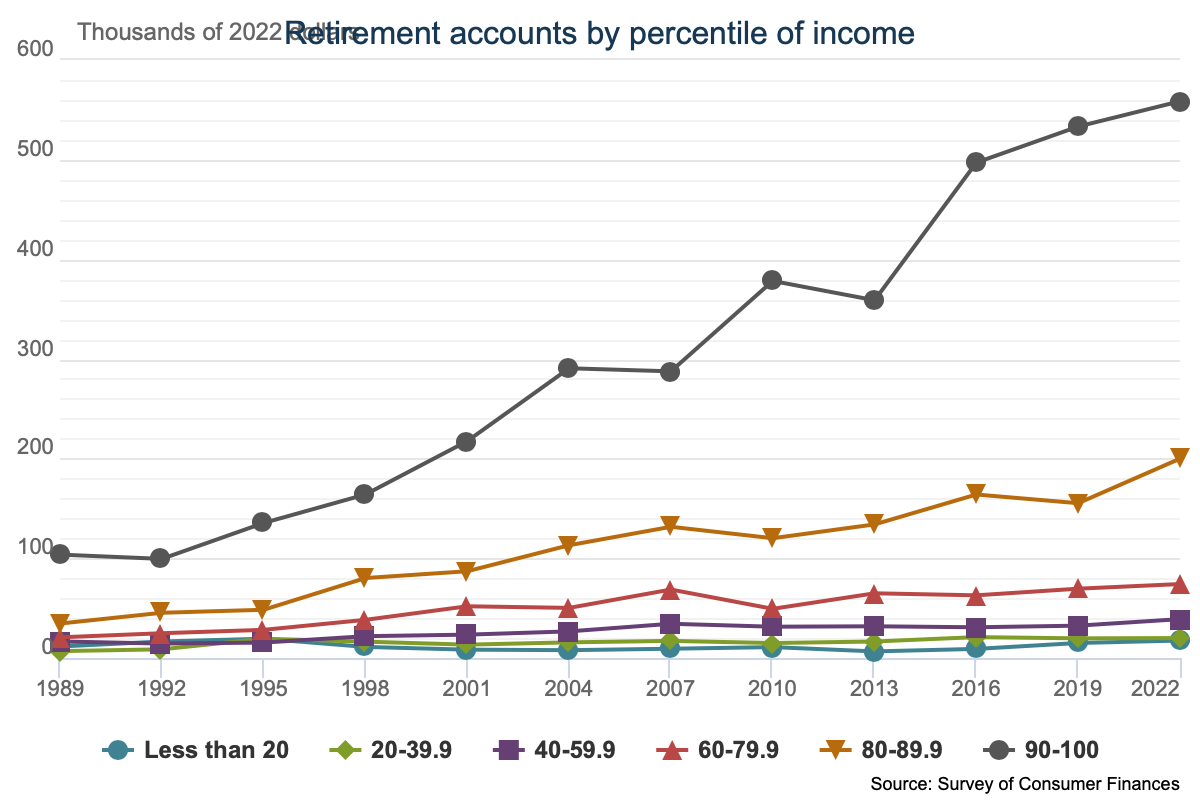The Truth You Need To Know Now About The 6% Trap
Is your employer looking out for your best interest with a 6% contribution to your 401(k)? Here is the truth you need to know about the 6% trap.
Employers love to market employer matching for 401(k) retirement plans to you.
Employers highlight to you that matching contributions are a major workplace perk.
It sounds like a win-win: you save money as an employee, employers contribute to your retirement plan, and everyone moves closer to financial security.
But, behind the employer matching is the 6% trap.
The 6% trap encourages you to save less for retirement.
I thought having an employer match was great for my one full-time job at a grocery store. Problems began arising as I learned more about retirement accounts and planning. My employer failed to discuss any of this with me. I only received a vague summary of my financial benefits in my employee manual from my employer.
You want to work to increase your income and invest in as many retirement accounts as possible to best position yourself for retirement.
Here is the truth you need to know now about the 6% trap to properly prepare and protect your retirement.

🚨Problem: What Is The 6% Trap?
The 6% trap is a behavioral and psychological phenomenon.
The 6% trap connects to employer-sponsored retirement plans.
The 401(k) is the most well-known employer retirement plan for employees.
Your employer matches the amount you contribute to encourage employees to invest in retirement savings.
How employers frame the employer match negatively affects your financial future.
🆘How Does The 6% Trap Work?
Employers match your 401(k) contribution as an employee.
The employer matches a certain percentage of your salary.
There is a maximum contribution your employer will make each year.
The maximum number most employers will put into your retirement account is 6%.
Here’s how the 6% trap works.
🆘Employer Match Formula
Your employer offers to match 100% of every dollar you contribute.
The number your employer will match is 6% of your salary.
Your employer will add $3,000 if you earn $50,000 annually and contribute 6% ($3,000) to your 401(k).
You'll now have a total annual contribution of $6,000 in your 401(k).
🆘The Psychological Anchor
There’s an employer matching threshold.
The 6% number becomes a target in your mind as an employee.
6% becomes a psychological anchor.
You believe you're saving enough for retirement by investing 6% of your yearly income.
The maximum employer match means you're setting yourself up for retirement.
Or so you think.
You have given yourself a psychological anchor that you think you're safe and preparing for retirement.
The reality is that you're not preparing enough for your retirement. Retirement will cost you more than you think.
🆘Stopping Short Of Optimal Retirement Savings
6% is not enough.
Employer match stops at 6%.
The consequence is that many employees do not contribute more than 6% to their 401(k) retirement account.
You need to save 10% or more of your annual income for retirement.
You want to maximize your contributions to your retirement accounts each year.
Employers often limit the types of investments that you can invest in with an employee retirement account.
Your employee retirement account may be limited to company shares or the most well-known index funds on the stock market.
I only had five investment options with my employer's 401(k) at the grocery store chain I worked for in Seattle.
You want to invest the money in stocks or ETFs in your retirement account. Don't let the money sit in your account.

🚨Problem: How Employers Positively Frame The 6% Trap
Your employer presents the 6% match as a perk of being an employee.
The communication between the employer and the employee only reinforces your undersaving for retirement.
🆘Simple Messaging
Employers, from their messaging to you as an employee, are around an employer's match limit.
Employers will tell you, "Contribute up to 6% to receive the full employer match."
6% becomes the number for you to aim for.
The reality is that it's the baseline for employer contributions.
This allows employers to save money.
You fail to plan for your retirement properly.
🆘Behavioral Psychology
Most people aim to meet the minimum requirements.
Meeting the minimum standard is framed as optimal for employees.
After all, going beyond the requirement means you have to do extra work.
The company told you what to do with your employer-matching plan.
Employees will strive for the 6% target.
🆘Positive Spin To Employees
The company's HR team and benefit providers highlight that your employer's 6% contribution is generous.
You’re employer is being charitable.
You don't have to worry about planning more for your retirement.
You don't have to review your savings or investment strategy.
Your employer has taken care of everything for you…Or so you think.
🚨Problem: Employer’s Default Contribution Rates
6% is the automatic enrollment in 401(k) plans for employees.
You'll frequently set the rate at 6% since it's the standard rate.
The employer's 6% rate implicitly sets a mental standard for what you consider normal.
🆘You Don't Want To Stand Out
You stick with what your employer tells you to do.
You're afraid to be the odd person in the workplace.
You don't want to make your employer mad.
You don't want to risk having your employer reduce your hours.
You don't want to risk being fired.
You contribute the default amount without question.
🆘The Path Of Least Resistance
Employees stick with the 6% rate.
Why?
They believe it must be correct since the employer chose the percentage.
Adjusting the contribution rates requires additional effort and time.
Many people are unwilling to figure out how to adjust the rates for their retirement plans, even though it benefits them in the long term.
🆘Behavioral Inertia
Employees rarely revise their savings strategy.
You're unlikely to return to adjust it once you've enrolled at the default rate.
The default contribution rate traps you in the 6% trap.
🚨Problem: Lack of Financial Education
There is a financial literacy epidemic.
Employers make it confusing to understand your benefits, especially your financial benefits as an employee.
The lack of financial education and long-term thinking makes you believe you don't need to save for retirement.
🆘Simplistic Guidance
Employers only direct you to the match limit.
Employers don't provide financial education about how to maximize your retirement.
You have no goals about how much to save or invest to prepare for retirement.
The employee manuals I've had from my past employers have financial benefits as the most convoluted section of the book.
Employers make it confusing.
🆘Complexity Of Retirement Planning
There are many variables to consider when planning for retirement.
Common variables to consider are salary growth, inflation, cost of living, investment returns, the stock market rising and falling, and your life expectancy.
These complexities make it hard for you to determine your savings needs.
You're already busy working for your employer.
The last thing you want to do is determine if you'll be ready for retirement.
The easiest solution is to tell yourself not to worry about it.
Believe that everything will be fine.
Set the matching rate to the standard 6% without question.
Forget about it and hope for the best.

✅Solution: Create A Retirement Account Outside Of Your Employer's
You can set up a retirement account in addition to the 401(k) you receive from your employer.
Fidelity is a well-known brokerage company that allows you to open a retirement account and invest in the stock market.
There are three popular retirement accounts besides a 401(k).
Traditional IRA: You can directly contribute to a Traditional IRA. A traditional IRA does not require an employer to sponsor your retirement account. The maximum contribution is $7,000 until you reach the age of 50. You can deduct a portion or all of your Traditional IRA investment for taxes if you make $89,000 or under as a single person or $189,000 if you're married.
Roth IRA: You contribute after-tax dollars with a Roth IRA account. You're not allowed to deduct contributions to your Roth IRA for taxes. You keep any capital gains you make from investments in your Roth IRA. You don't have to pay income or capital gains tax.
Health Savings Account (HSA): Healthcare is a cost you'll always have to deal with over your lifetime. You'll continue to have more health issues as you age. A health savings account helps you prepare for future health costs. A health savings account has tax advantages. Your employer may match an HSA plan. You can make various investment contributions with a health savings account, from stocks to mutual funds, to fund your future healthcare visits.
🏁Summary
The 6% trap is a way for employers to prevent you from investing more for your retirement.
You can take action today to better plan for your retirement by:
✅Maximizing your contributions and the amount your employer matches to your 401(k).
✅Opening up another retirement account with a brokerage like Fidelity.
✅Make it a habit to max out your contributions to your retirement accounts annually.
Take action today to help your future self be retirement ready!
Disclaimer: This content is for educational, entertainment, and informational purposes only. This is not financial, investment, or any advice. I write online about topics I find interesting. I make mistakes just like everyone else. Always consult a professional before making health, life, financial, investment, tax, or legal decisions.




